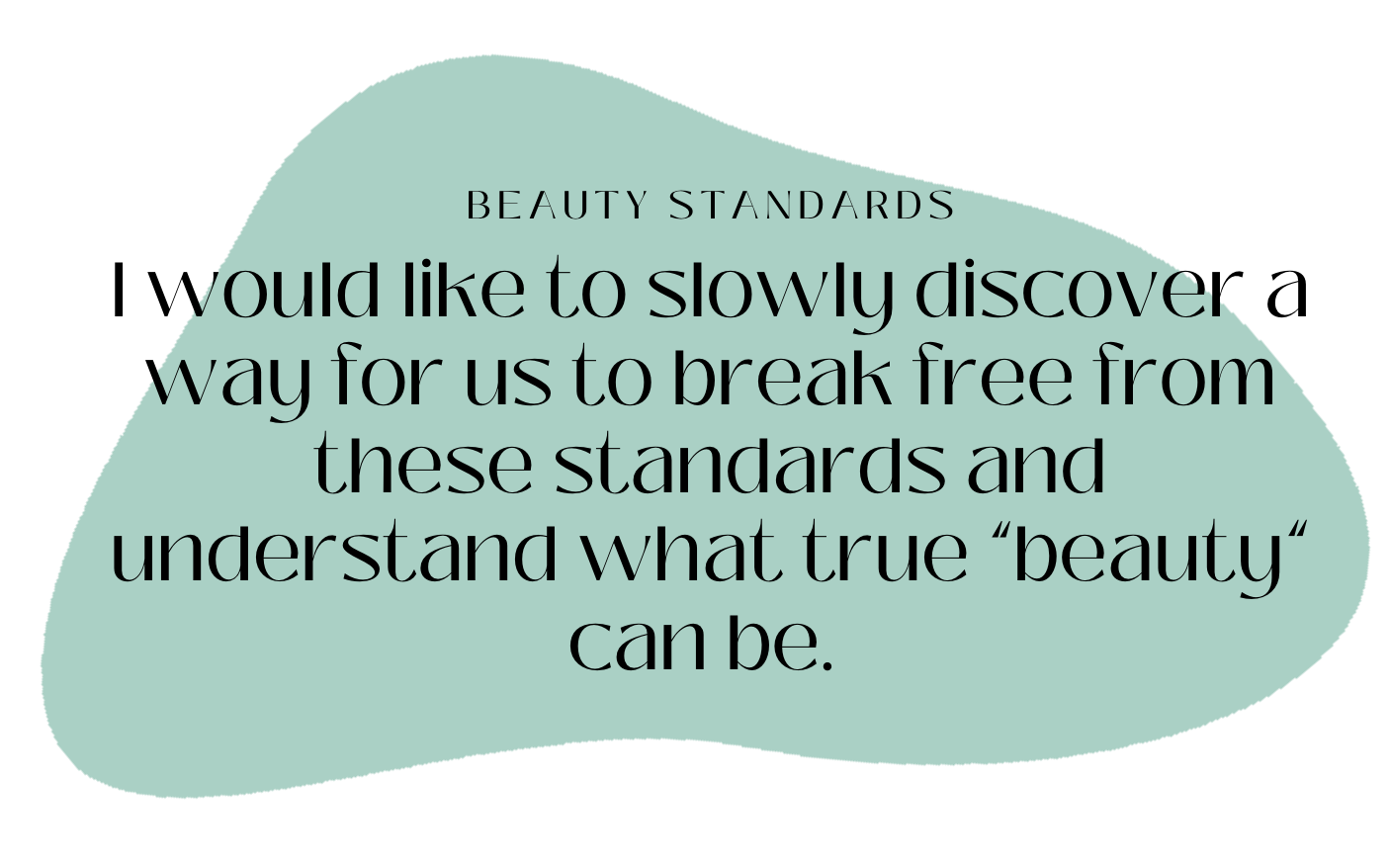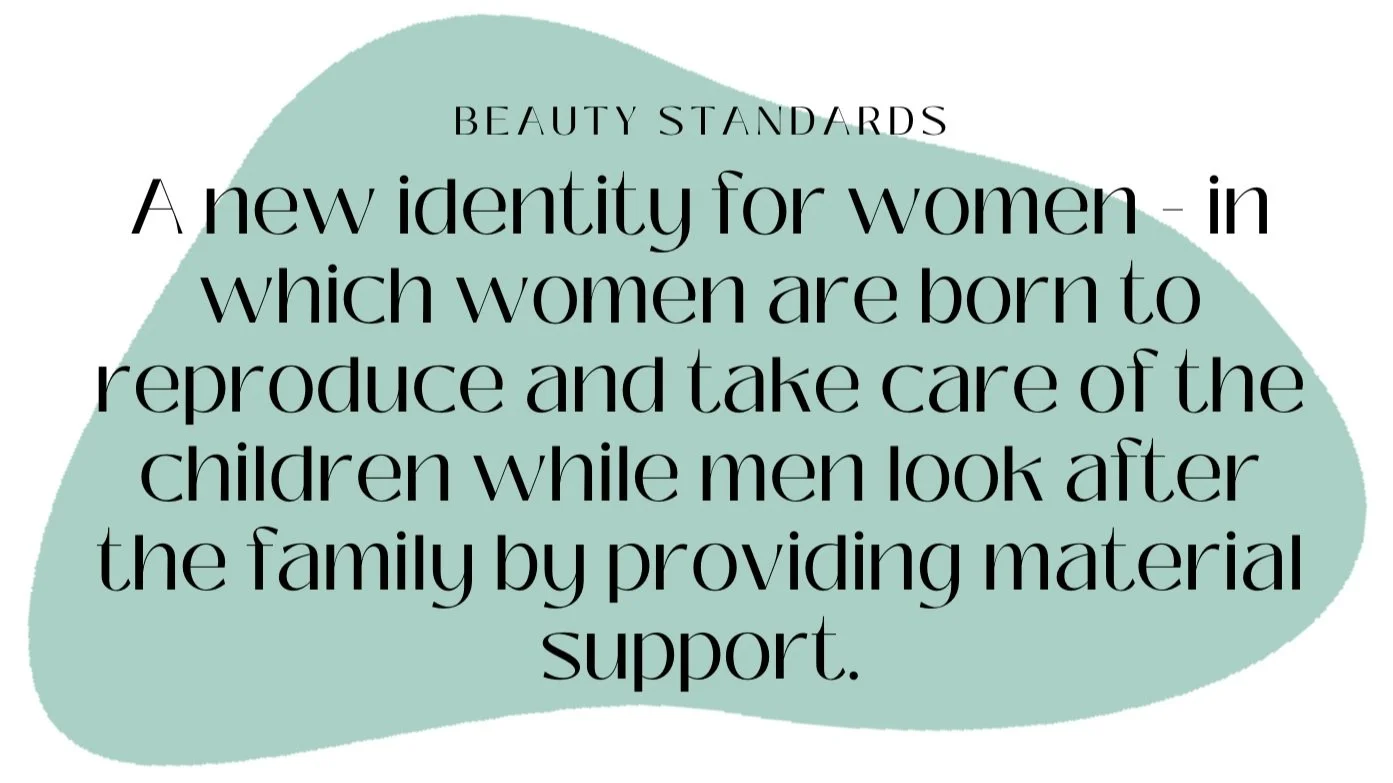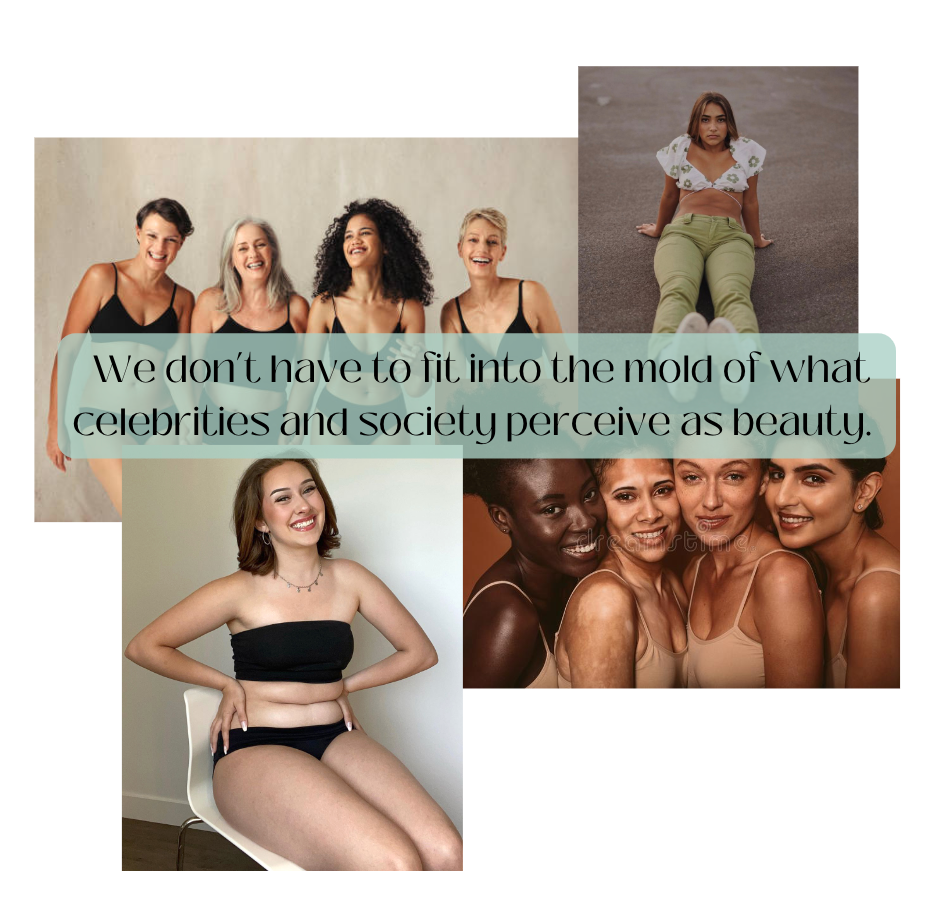beauty standards
beauty standards.
Sometimes I forget I am a human with a body, not a playdough that can be pressed and squeezed until it fits the predetermined mold that society has deemed beautiful.
- Yasha Babani
From the beginning of civilization and culture, we have been told what beauty is. We have no choice in what society deems as beautiful, how society might perceive our physical appearance, or, in some countries, how we dress. For thousands of years, a women’s appearance has chosen her life for her. In this blog post, I would like to discuss “beauty standards,” how they have impacted us throughout history, how beauty standards are influencing us now, and how they are set. I would like to slowly discover a way for us to break free from these standards and understand what true “beauty” can be. I will mainly discuss beauty standards set for women, but I recognize the unfairness of similar standards set for men.
To understand the effects of beauty standards on us today, we must first explore the orgins of beauty. According to an article from Behaviour Science, “the strategy of each sex includes advertising to potential mates, and competing members of the same sex, to demonstrate that he or she is valuable. The display of these traits is called ‘attractiveness’ or ‘beauty.’” Thus, the desire for beauty and attractiveness may have sprouted from our strategies to increase reproduction and mating choices. While men needed material resources, such as land, to find a mate successfully (the reason behind society’s unfair standards and requirements for men), women only needed to appear attractive to their male counterparts for them to mate. This is not only the starting point for humans’ desire to be attractive, but also the new identity for women - in which they are born to reproduce and take care of the children while men look after the family by providing material support.
Throughout time, a standard for what is attractive appeared. Soceities and cultures all had their own unique perception of beauty. Men and women agreed on who is and not attractive. From slender arms and legs to a rounded figure, different cultures in different periods all have their predetermined view of who is beautiful.
Those the society perceived as “beautiful” often have a higher acquisition of resources and greater reproductive success than others, a literal definition of “pretty privilege,” something I hope to discuss further in the future. This can be easily reflected in many cultures. When China was run by an imperial system, women with more attractive faces had higher chance of becoming a part of the royal court, while others might have led a life of simple marrige and nothing more. Attractive faces appeal to us, and thus we choose to interact and communicate with those that are “beautiful.”
But how does the society of today set beauty standards? Through celebrities and public figures. Through social media, celebrities have become even more embedded into our everyday lives. We are constantly shown images of famous women with specific skin tones, bodies, and hair. They are perfect figures for what society believes to be beautiful (as mentioned in my last blog post). With their widespread fanbase and influence, their representation of beauty will no doubt spread to teenagers and people worldwide. Kim Kardashian is a matching example of such a figure. With an hourglass figure, tanned skin, and over 300 million followers on Instagram, her image of an attractive figure widely influences people in the US. Teenagers in the US have a completely different view of what is attractive compared to teenagers in the eastern world, whose celebrities are pale and skinny.
I mean no disrespect do these influencers, I am simply trying to give an example of Kim’s influence.
We are influenced by our society. If the majority believes that skinny is a new beauty, people inside this culture will try to become skinny. It is impossible to say that we aren’t insecure in some way when we do not match society’s perception of beauty. We don’t have a choice in how we are perceived.
There is an immense variety of beauty amongst our society, but when we are in an environment with only a singular perspective, we fail to see what other forms of beauty can be like. A tanned skin child living in China might be insecure about her appearance, but in western cultures, this tanned skin is what they might long for. Just because our culture, our environment, and those around us have a different view on beauty from us does not mean that there is only one type. Do not allow a societal belief to restrict you from being yourself. I’m not telling you to be ultimately comfortable with what you look like, but realize that we don’t have to fit into the mold of society's predetermined beliefs . We have a choice, and we must change how we view our appearance.
This is not trying to support what I believe to be a toxic body positivity movement recently popular across the internet, but saying that beauty is not singular, we don’t have to look a certain way to be beautiful.
Changing a belief embedded into our community requires the commitment of individuals We must learn to accept people with different body types, skin tones, and faces. Be comfortable with those around you, see them the way they might see you.
Simultaneously, we need an environment where women are not defined by attractiveness. Women are not an embodiment of beauty, their value can be found in our intellect, talent, and personalities. When people see women, we shouldn't only praise them for their physical appearance but also their inner values. Only this way can we shake free from the bonds that tie us to the singular idea of beauty. We are beautiful and valuable, regardless of what society might tell us.
Citations:
Yarosh, Daniel B. “Perception and Deception: Human Beauty and the Brain.” Behavioral sciences (Basel, Switzerland) vol. 9,4 34. 29 Mar. 2019, doi:10.3390/bs9040034






